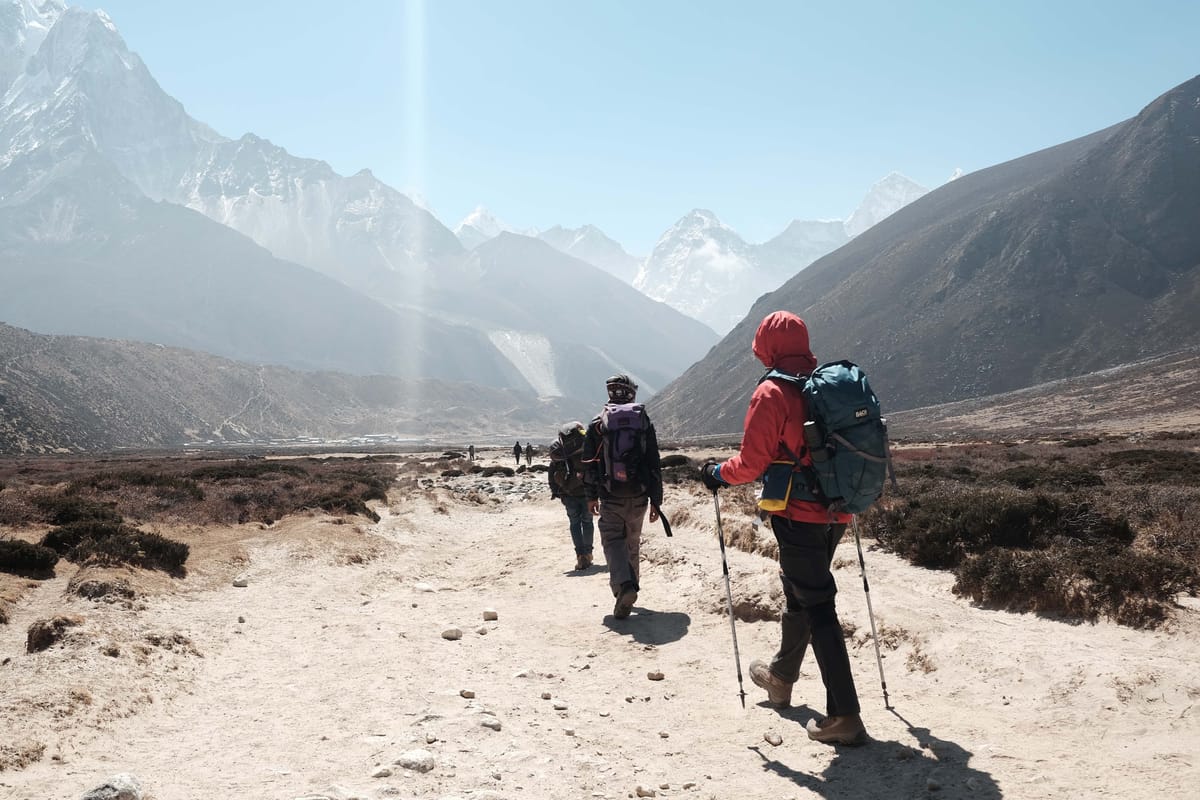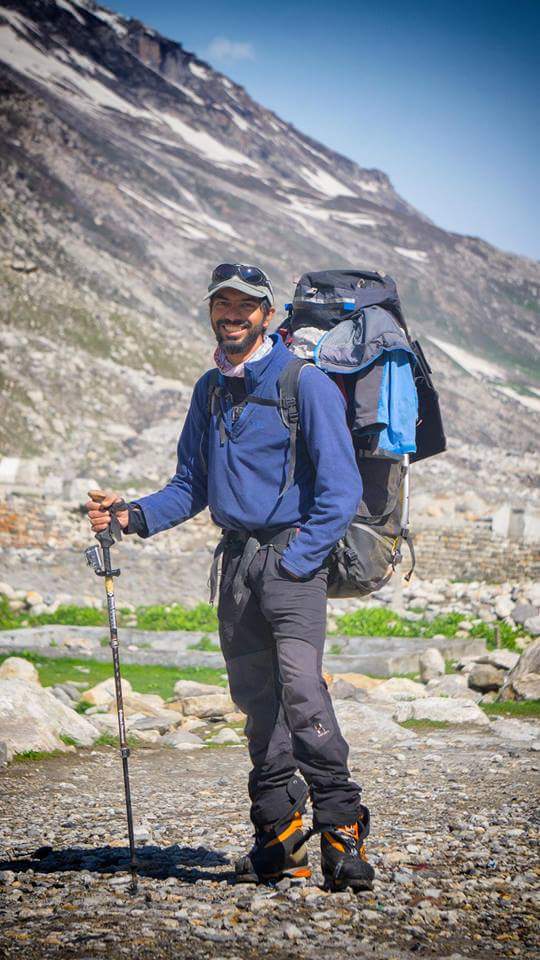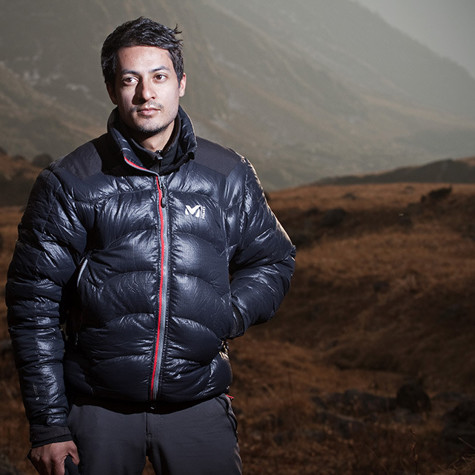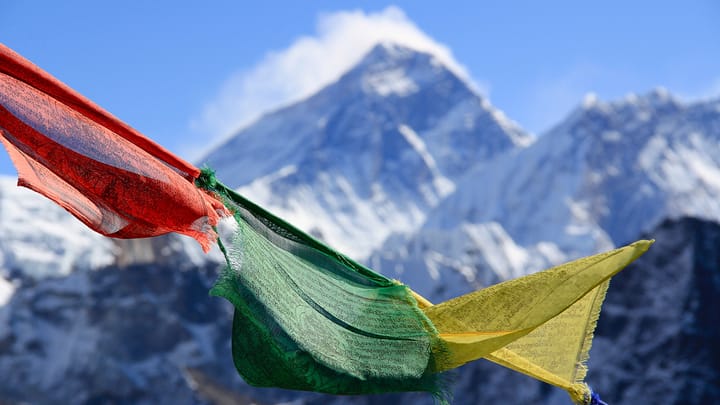A Letter to the Editor: India's Lost History
A response to the article entitled: India’s Lost History – Part 1. Indians are Embracing Mountain Sports, But There is a Big Problem with #FakeNews

At the Outdoor Journal, we strongly endorse open dialogue, the right to reply and the right to opine. We are therefore very happy to publish objective, and thoughtful responses to any of our content. The Outdoor Journal is an objective media platform, intended to give a legitimate space for diverse voices from across the spectrum.
Where possible, The Outdoor Journal will endeavour to respond to these letters.
The below was written by Karn Kowshik, on 3rd September 2018, in response to an article published by the Outdoor Journal entitled India’s Lost History – Part 1. Indians are Embracing Mountain Sports, But There is a Big Problem with #FakeNews. Apoorva Prasad, the Outdoor Journal Founder and Editor-in-Chief, replied to Karn on 24th September 2018, that response is also below.

Dear Sir,
I am writing in response to this myopic, journalistically unethical piece, which, I believe, is based on a flawed premise. To start with, the writer, Siddhartha Chattopadhyay, ignores one of the most basic rules of decent journalism – the Right of Reply (here are the SPJ Code of ethics https://www.spj.org/
The article calls for a dialogue, and promises in the first paragraph to have interviews from many generations. Considering, in actuality, this particular piece has a grand total of zero interviews of Indian climbers, I wonder if Mr. Chattopadhyay has confused the word ‘dialogue’ with ‘monologue’.
As one of the climbers mentioned (though once only, and, possibly due to an editing error, I can’t be sure if the mention is complimentary or derogatory) in the piece, and indeed, as an Indian climber of the current generation, I’m taking the liberty to reply – and engage in the dialogue you believe is called for. I hope you will publish my response in its entirety.
1) Delhi is not India. Mr. Chattopadhay seems to believe that his sample size is indicative of all climbers in the country. Of all the climbers mentioned in the story only two – Harish Kapadia and Pranav Rawat are not from Delhi (I too, have lived in Delhi). I’m not sure how long the writer has been a climber, but it seems to me that he has made little effort to connect with vibrant and cutting-edge climbing communities from across the country.
If he had done so, he may have found inspiring stories from West Bengal, a climbing culture that has an open, and deep respect, for their ‘seniors’, and where climbers like Aninda Mukherjee are leading a revolution of self-supported climbing. Or, possibly, he may have been fortunate enough to have a conversation with Almora based Dhruv Joshi, who might have told the writer about his great respect for Col. Balwant Singh Sandhu. Or, possibly, he would have been able to trace a direct link between Mumbai’s Abhijit Burman (or Bong) and the Suru Boulder Festival, where Mr. Chattopadhyay recently climbed his first multi-pitch trad route (if you’re wondering how I found out… Instagram, of course!) Maybe the writer would have found some wonderful stories from Uttarkashi. Or Shillong. Or even seen how Mohit Oberoi’s climbs inspired a whole generation of climbers in Karnataka, far from New Delhi.
Unlike Mr. Chattopadhyay, I have interacted with all of these communities on a deep level – many of them are close friends. In conversations, I have never found a denial of our history. If anything, I’ve found a deep appreciation for it, bordering on obsession.
Once the writer does speak to climbers from all around the country, I’d love the opportunity to engage in a dialogue over his claim that the current climbing culture does not have a strong footing.
2) Mr. Chattopadhyay’s witch hunt of Abhijeet Singh and Pranav Rawat. Full disclosure - Anybody who knows me is aware that Mr. Singh and I do not get along for personal reasons. Yet, at this point, I must come to his defense, and protest the unfair way in which the duo have been vilified. Let me stress, if Mr. Chattopadhay accuses them of lying (or the gentler sounding ‘untruths’), but does not give them an opportunity to defend themselves, it is nothing but bad, lazy and unethical journalism.
I wonder if the writer has ever stood below the Shafat Fortress. If he had, he would clearly know that it is a massive rock climb, with some small sections of ice. Even so, it is an Alpine Route, and not an Ice Climb. That leaves us with 2004, Sikkim. Three American climbers climbed 10 routes in the Yumthang valley, and all they left behind was one AAJ entry. This had no impact on the Indian Climbing community. Such is the colonial nature of western climbing. The ascent of Shilla Nala changed how Everest-obsessed Indians perceive climbing. Even if we were to concede that the Sikkim climbs were the first – that makes the Spiti climbs the second. That’s not ‘nowhere close’ to the first, as Mr. Chattopadhyay states. As far as whole numbers go, 2 is quite close to 1.
I still believe Singh and Rawat’s climb was the first – even if only on a technicality. Ice climbing is graded in the west as WI (water ice), and in India as HWI (Himalayan Water Ice). Please note the W stands for Water, not Waterfall. WI is different from AI (alpine ice), as Alpine Ice forms from snow, and WI from water. Not all ice climbs are waterfalls. In fact, very few of them are, ice climbs often from by drops of water or moisture in the air – Lingti and Shilla are both distinctly waterfalls.
Even if we accept that the writer has discovered an ‘untruth’, perhaps the article could be improved by showing the logical process of extrapolating one team’s actions to all Indian climbers of a certain age.
3) What are the writer’s credentials? I am loathe to use an ad homimen attack, but the fact that writer passes judgment on all of us climbers forces me to do so.
He talks of a person preoccupied with being a well-known alpinist. Criticising somebody without identifying them is, in my opinion, cowardly. My name – first name only – pops up 2 sentences later. I would be forgiven for thinking the writer is referring to me, except I know he’s never spoken to me, so I’ll put this down to bad editing.
Mr. Chattopadhyay believes that climbers must climb for some higher spiritual pursuit. Indian Climbers have him “convinced that it’s the mountains we climb and not ourselves.” I’d like to ask the editor of the Outdoor Journal – who gave Mr. Chattopadhyay the right to question anybody’s motivations for climbing? Does he believe that the true, honest climber is only one who climbs not to climb a mountain, but to climb oneself, whatever that may mean? As a recreational climber, is the writer unaware that there are many reasons to climb – a prominent one being the money to feed yourself and your family? Why is competition, according to your magazine, not a valid reason to climb (I’m sure the International Olympic Committee would love that dialogue)?
Mr. Editor, why do you believe that a person with limited experience in both climbing and journalism has the right to call out ‘the lack of maturity’, and to use adjectives like ‘self-centred’ or ‘presumptuous’, in anybody else? Before decrying the millennial Instagram culture – has the writer looked to see how many followers western climbers, for instance Sierra Blair Coyle, have? Has the writer considered that being on social media is not abnormal for any young person today? (as an aside, I want to point out that the instagram handle @peacefulending has no less than 460 posts.)
4) The flawed premise. Through this quagmire of partially explored thoughts that is article – I understand the main premise to be that the current generation of Indian Climbers deny the achievements of the generations before them, and use ‘untruths’ on social media to monopolise their ‘contribution to the outdoor community’.
That the climbers of today seek to deny our predecessors their place is something Mr. Chattopadhyay may feel, but it is a claim which not only reflects his ignorance, also brings to notice a kind of ignorance that seems intended. To start with, the evidence does not point to this. The Indian Mountaineering Foundation, the Himalayan Club, the Himalayan Journal – none are run by millenials, but by people of Mandip Singh Soin and Capt. Kohli’s generation and stature. Look through the list of the IMF’s members – I don’t think there is anybody under 35, and most are much older. All Indian mountaineers go through the BMC and AMC, where tales are told of Tenzing Norgay and MS Kohli. Ask any climber who came out of NIM about ‘C Sir’ and I guarantee you will not get a single disrespectful opinion.
In the Indian Climbing World, the power is firmly held by the old guard.
Following basic logic, if the main premise is not true, the secondary premise cannot hold water either.
Lets get to the climbers you intend to write about – the ones who have supposedly been denied their place in History. Captain Kohli, as I’ve already mentioned is a legend, and one we are all aware of, if not in awe of. Mandip Singh Soin is far from a historical figure – he is deeply entrenched in Himalayan climbing even today. As founder one of the most successful outdoor companies in India, he runs trips all over the world, and, in India, works with some of the world’s top alpinists. It shouldn’t be too hard for Mr. Chattopadhyay to figure this out - Mr. Soin is, after all, an advisor to the Outdoor Journal. Mr. Soin also knows, personally, how much respect I have for him and for his climbs. Mohit Oberoi is very much part of the climbing scene – you’d be hard pressed to find a climber who has not needed to go to his store, or has not climbed on a wall built by him. Punit, again, is not history. He is still going strong, and runs a beautiful Instagram account himself. Harish Kapadia – its absurd, even heretical, to say that he is not respected. Last year, he was awarded the Piolet D’Or Asia Lifetime achievement award (a simple google search shows that the your magazine did not cover this at all). He is a contributor and advisor to the Alpinist Magazine, who you have referenced in this piece. More importantly, his prolific writing has made sure that every climber wanting to get into the Himalaya must read, and learn, from him. In fact, in Vol 72 of the Himalayan Journal, I speak about him, and say that we must honour greats like him by our achievements. Their place in history is solid, and we respect and honour them.
Does the writer expect us to honour them by speaking about them every chance we get? Must millenials add #proudofmypredecessors to every instagram post for the writer to believe that they are, indeed, respected?
This schism between generations that the writer speaks about, is beautifully explored by Maya Prabhu in the Alpinist Magazine (Notes from the Frontier). I would recommend reading this.
Mr. Chattopadhyay, the job of a journalist is to question those in power, not to harass those without it. I hope, that in your future pieces, you do your job as a journalist, and ask questions to those in power. I look forward to you asking them, why, despite all their great achievements, the generation that came after them had to go through the same struggles all over again. I am sure you will be exploring the systems they set up that tacked the real problems of climbing in India – the lack of equipment, the lack of funds, the lack of cutting edge training, the lack of an internationally accredited guides body – as laid out by Ashok Madgavkar as early as the sixties. I hope, when you say you will explore the lost history of Indian Climbing, you will also profile climbers like Nawang Gombu, Phu Dorjee, Hon. Capt. Lalit Negi, Rattan Singh Chauhan or Hero Wangyal.
Sincerely, Karn Kowshik
Ps – Please feel free to include the disclosure that I was in talks with the Outdoor Journal for an editor level position, and that talks were ended mutually with no animosity. This response was sparked purely by the piece, and is written in good faith with no ill intent.
The below is a response, written by Apoorva Prasad, the Outdoor Journal Founder and Editor-in-Chief, and sent to Karn on 24th September 2018.

Dear Karn,
Thank you for your Letter, and my apologies for taking the time to reply.
We strongly support your right to reply or your right to opine and are more than happy to publish it. The Outdoor Journal is meant to be an objective media platform as much as possible, and to give a legitimate space for diverse voices from across the spectrum.
As such, Siddhartha Chattopadhyay's piece is marked as an Op-Ed, meaning that it is an opinion piece, and not necessarily objective reportage. As an opinion piece, we believe it represents a slice of the current zeitgeist in the Indian outdoors space - which it refers to - but also in a much wider, international and general sense, when discussing how social media transforms the understanding of history. We apologize if this was not made clear in the presentation of the article, and an appending note has been duly added.
The author mentions that his piece was sparked by the learning that there was a great deal more history to Indian climbing than he, by his own admission a recent entrant to the scene, was aware of. We believe his core point is valid: both the online noise of the "Instagram generation" (globally, not just in India) and the brunt of marketing rupees (or dollars) spent on campaigns to promote certain feats to them, indubitably drown out history, replacing it with a kind of postmodern meta-history disconnected from records, archival information or just plain facts.
You touched upon several points pertaining to communities of outdoor enthusiasts across India who revere past heroes and are cognizant of this history. We do not disagree with you. The Outdoor Journal's editorial mission has always included recording past deeds and figures, who we believe are under-appreciated today - please ask an average Indian climber at one of the many new gyms coming up or even do an offhand survey at the IMF wall, about Col. Balwant Singh Sandhu, or about "C-Sir", and I can guarantee you that the vast majority will have no idea who you are referring to. I've done this myself. On the other hand, many of them have certainly heard of Alex Honnold or Jimmy Chin. Why? Clearly, marketing dollars pay off, and Youtube videos of modern-day sponsored ascents have more of an impact on impressionable minds, than historical ascents in printed books.
As you may know, I too studied at NIM under C Norbu - "C Sir", with whom I had a strong personal relationship. (I believe he wore and used the watch I gifted him for many years after, as well as a balaclava). Maya Prabhu's article in the Alpinist, while the work of a truly gifted writer, is also an essay by a non-climber and an outsider by her own admission. Its greatest flaw is essentially leaping between the Doon School era of the 1950s as the first Indian alpinists - directly to you, Karn, and your team, as the next ones to have apparently come after. Indeed, the same charges you level upon Mr. Chattopadhyay, could be equally leveled upon Ms. Prabhu. Both are outsiders to Indian climbing, both gloss over lesser-recorded history. A few petty examples: in Ms. Prabhu's piece, for example, there is no mention of the first Indian ascent of Meru in 1984, done in alpine style by Mandip Singh Soin, Charu Sharma and others, a story that we published in The Outdoor Journal in May 2013, giving Ms. Prabhu ample time to have done her homework for her piece published in Summer 2016. Mohit Oberoi, who you yourself mention is one of the best-regarded climbers and explorers in India of his generation, does not even merit a namecheck in Ms. Prabhu's piece, which in fact reads like more a hagiography of your own achievements, than an objective history of Indian climbing or alpinism. (To note, Mr. Oberoi is not just a rock climber, but has made alpine-style ascents in Manali, the Chattru region and others - exactly the same type of climbing that Ms. Prabhu credits you and your "small group" alone, in her piece). When she namechecks Prerna Dangi as the "only Indian at a BMC meet in Scotland", she's clearly ignoring all the other Indians who may have been "the only Indians" at various AAC, BMC and other international climbing meets, events and ascents over the four decades prior - and there have been many, myself included.
(Once again, an example showing that those who have not sprayed about their achievements on online channels, risk being written out of history.)
As I think you know, I am personally not very supportive of this need to construct a divide between so-called "Him-Alpinism" with Alpinism proper, for the simple reason that so many climbers before us have climbed in the Himalaya alpine-style! The debate on Alpinism in the Himalaya is as old as the sport of mountaineering itself! Even the early attempts on Everest and K2 were done alpine style, and then capsule style. Frank Smythe's wonderful books on early explorations in the Himalaya came with a strong ethical sense of climbing and exploring light and fast, alpine style alone. The invention of siege-style tactics came about after the World Wars, as a realization that (European) military style tactics were perhaps useful in an era focused on "conquering" mountains for "national glory"! The first line on Herman Buhl's Wikipedia page states that he was particularly innovative in applying Alpine style to Himalayan climbing - and let us remember that his solo FA of Nanga Parbat was in 1953, and he died in 1957 on an alpine style climb of Chogolisa!
Even in a modern sense, after the oxygen-fuelled, seige-style 'conquests' of the 50s, 60s and 70s, modern climbers have returned to Alpine-style ethics in the high mountains and the high Himalaya and Karakorum. Once the East Europeans, Poles and Slovaks entered the Himalayan realm in the 80s, they were so dirt poor they simply couldn't afford the high expense of Himalayan seige tactics. So they climbed big mountains the old way, and succeeded.
Today, from Conrad Anker's team on Meru Sharksfin, to the Huber brothers on Shivling, to Mick Fowler's Piolet-d'Or winning ascent on Kishtwar Kailash to countless other climbs - all have been done in fine alpine style ethics, without feeling a need to create new terms or paradigms.
Just because this generation of Indian climbers are finding alpine-style climbing in the Himalaya somewhat difficult, for lack of a better word, simply does not justify inventing a new field or terminology for it, in my opinion.
I will end this rant with due apologies and a note that I respect your own skills, passion and dedication to the mountains, and this response is in no way a personal criticism of your achievements, nor of your compatriots.
With best regards,
AP
Cover photo: Photo by Ted Bryan Yu on Unsplash





Comments ()